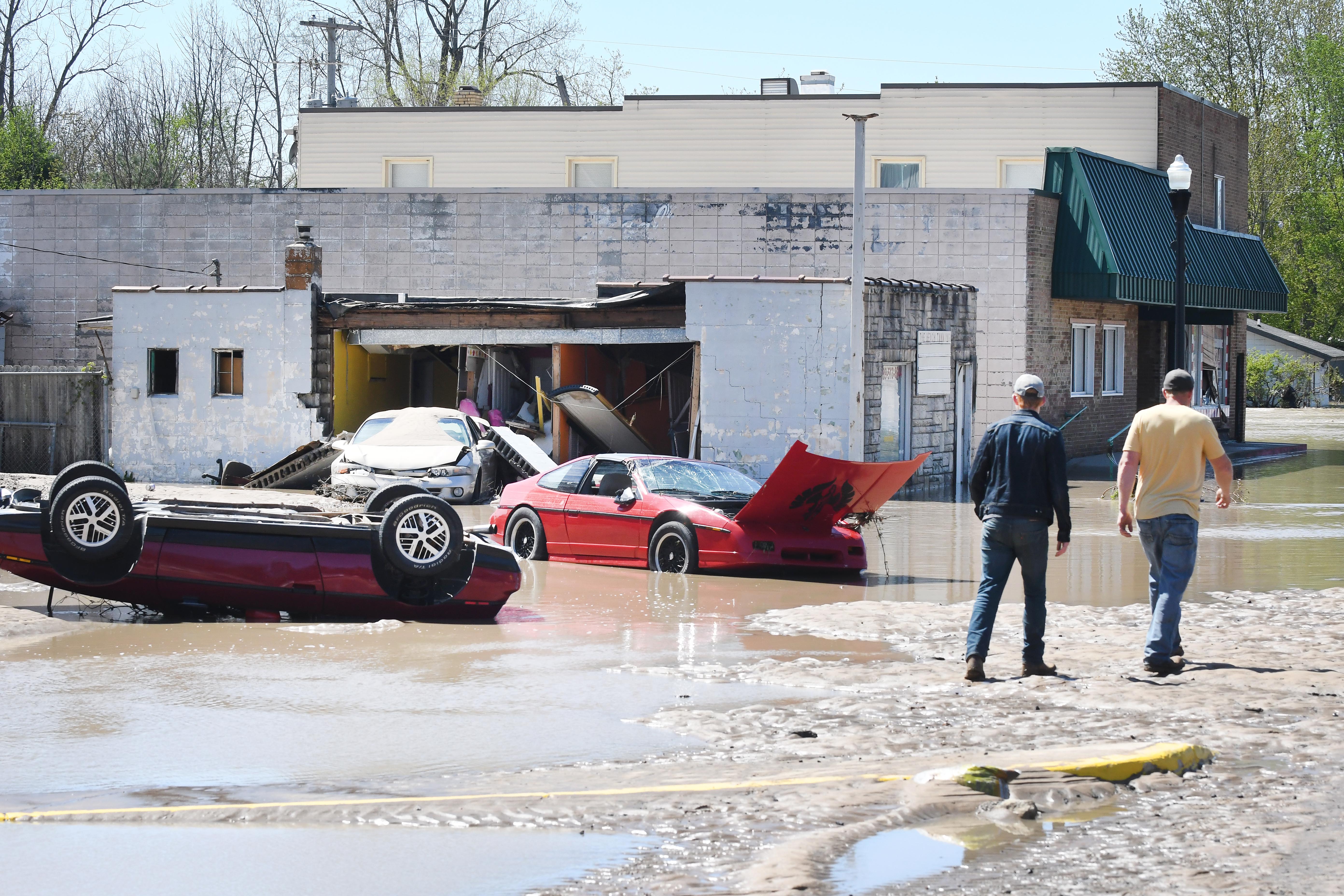

In May of 2020, amidst the first few months of a global pandemic, multiple days of unending rain pelted mid-Michigan. On approximately the 4th straight day of rain, worries about flooding were growing, especially within the community of Sanford. Sanford is no stranger to floods, having often endured them on a yearly basis, but this one was much different. It came quick, with sufficient warning, and rose well higher than any flood has before in the area. Eventually, multiple dams upriver from Sanford failed completely, water breaking through and pouring over levees as it rushed down river. Flooding grew even North of Sanford's own dam, houses and communities built upon its lake devastated. When the Sanford dam broke it was no real surprise, water rising over 35 feet higher than it should have been. Sirens rang through he neighborhoods at night, telling everyone in listening distance to evacuate even if they weren't on the riverfront.
Thankfully, when it was all over no people had been seriously injured. However, the foundation of the community could not say the same. Hundreds of houses were destroyed, roads were torn to shreds, and the lake that much of the village had built around was no more after the dam itself was no longer functioning and its levee had been destroyed. There is one piece of the puzzle, though, that does not get focused on nearly as much. Almost all of the businesses in Sanford are built along Saginaw road, the effective main street of the village. Saginaw road itself, and all the building around it, were effectively destroyed after the damage the flood did to them.
Now, almost a year later, normalcy has, for the most part, returned to Sanford. Roads have been repaved, homes rebuilt, and life mostly restored. Businesses, however, remain a major issue. Multiple businesses, such as The Upholstery Place and Goodall Insurance, decided that the cost of restoration for their buildings was too high and have since closed their doors forever. The building that the Upholstery Place once stood in no longer exists, the owners choosing to condemn it over keeping it. Other businesses moved out of Sanford after the flood. Lanny's a hometown favorite of many Sanfordians, has since relocated to the Midland Mall. With all of these businesses leaving the area or closing entirely, there is growing concern that Sanford may lose the ability to sustain itself and become far too reliant on Midland. Without these businesses, Sanford may not have the strength to live on, and that's an issue for far more people than just the locals.
While this issue may not entirely lie within the government's jurisdiction, that doesn't mean there aren't ways that they could help. One thing we believe they should do, and have the power to do, is expand upon the financial aid given to locals who were affected. After the flood struck, the National Guard came to Sanford as well as United Way, all trying to find ways to help in a physical sense. Eventually, FEMA was able to give financial aid to many of those who lost their homes in the flood. However, after discussing it with Lanny's owner Ryan Such, we found that the money they were given hardly covered that cost of setting up a new location, and would never be enough to pay for registration. By reaching out to the FEMA small business department with the help of local businesses and enough voices, we may be able to secure more financial aid that will allow those who chose not to stay to reconsider.
To help all those who live in Sanford, and to try and keep the town itself alive, we need to push for change. For this, there are two separate routes we can pursue. The first is to talk to the businesses owners directly, presenting them petitions filled with hundreds of signatures. However, we have very little leverage in this situation. The best plan is to combine both a petition and FEMA legislature together. By working together with local business owners we may expand our range of signatures on the petition and create a larger force with which to present the FEMA small business sector in an attempt to secure more aid for local businesses. With that being said, just below is a link to the FEMA small business sector if you wish to get in contact with them directly or understand deeper what we are working with.
As previously mentioned, many businesses have since moved out of Sanford. For our purposes we can focus solely on Lanny's Restaurant for this. Ryan Such, the owner, has talked with us repeatedly about why he moved and whether he would return, and he has said that he would not be willing to fully return, but would lean towards opening a second location back in the old building. This is because after moving into a significantly bigger city he has profited much more than he has before. However, the question has been posed multiple times to him whether the additional profits are worth leaving his hometown and his people behind. The exchange, he has said, is not worth it and if he had been given the choice he wouldn't have left, but of course the flood doesn't give negotiations.
If you are willing to help at all, in any way, shape, or form, we appreciate that tremendously. To make it easier for us all, here is a link to access a Petition that will be presented to the various business owners in questions like Ryan Such, owner of Lanny's Restaurant. Change.Org: Keeping Sanford Business in Business
